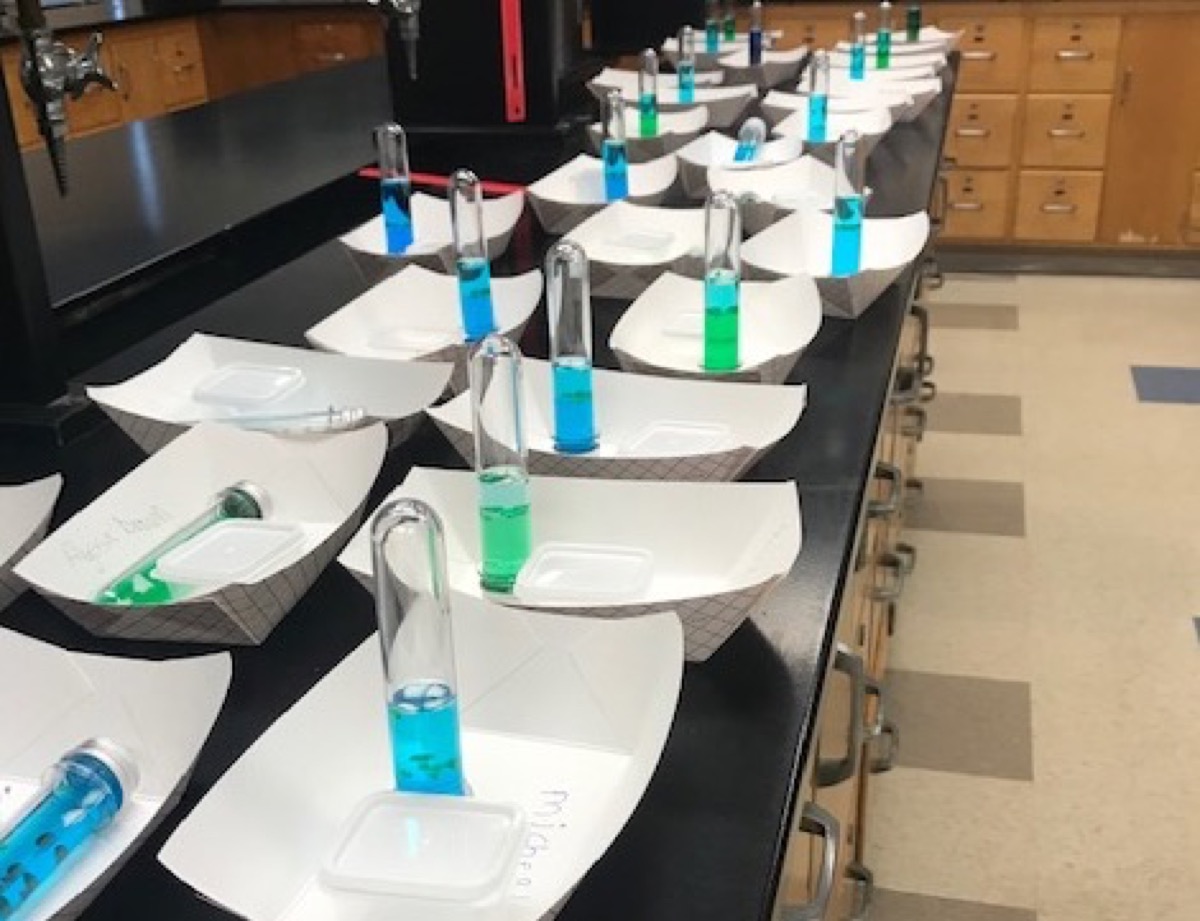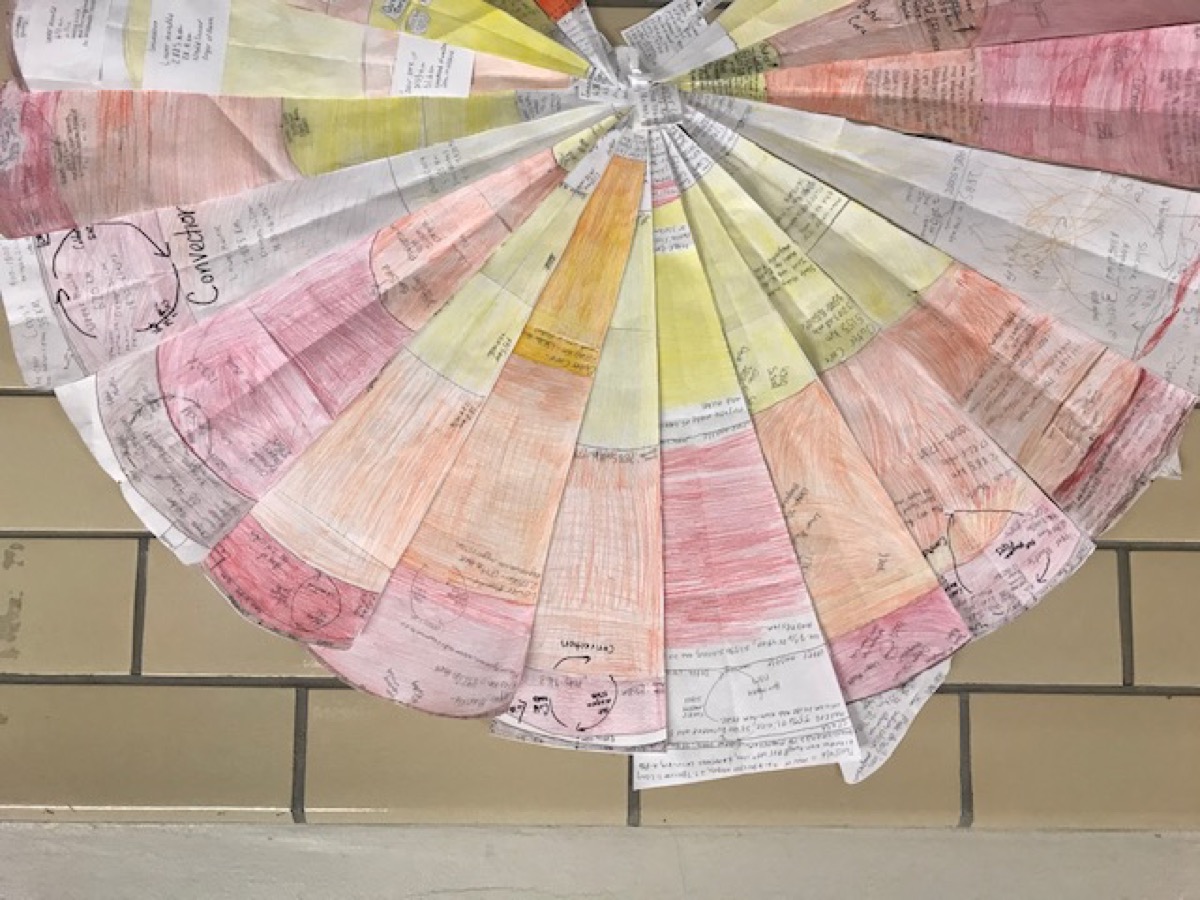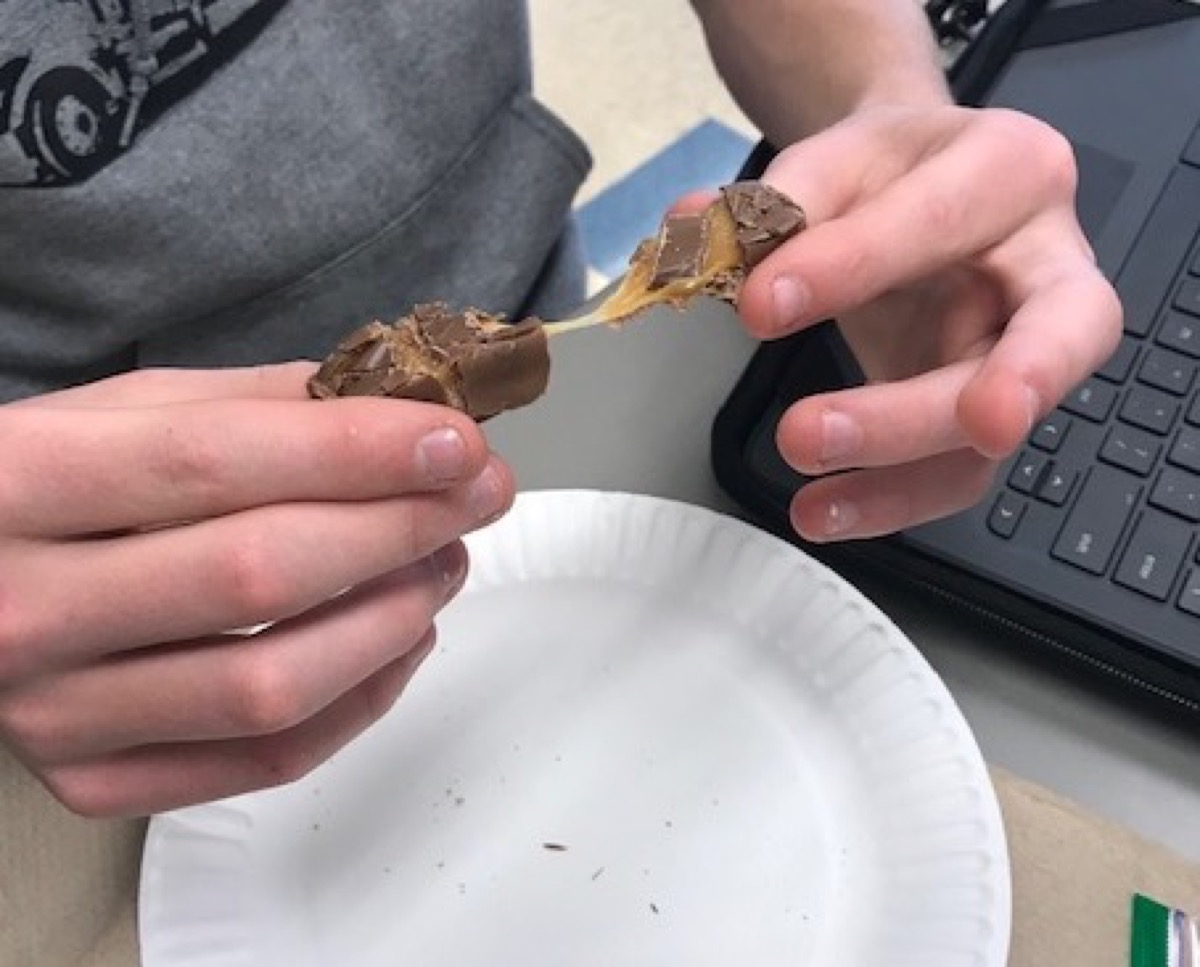New activities to teach familiar concepts
COVID-related challenges made science labs difficult, but Nikol Mundy of David Anderson Junior/Senior High School rose to the occasion! Mundy was able to see students face-to-face, but the stress of doing hands-on science experiments while following social distancing rules was a challenge. "The summer workshop gave some perspective on how I could still incorporate regular science labs into my curriculum," Mundy said.
The Geology lessons in Units 1 and 2 align with state standards for her 8th grade science classes, made up of students of varying abilities. "I teach lessons about the Earth’s interior and how constructive and destructive forces cause the Earth to be dynamic each year," Munday said. "For example, differentiation of layers and plate tectonics are topics I have focused on before, but I was excited to get the students involved in new activities to demonstrate these ideas."
Mundy shares about the lessons and student reactions:
Lesson 1.1 Differentiation of Earth’s Layers: Students really enjoyed this lesson. It was my favorite because they got so excited and asked so many questions. They thought it was really cool that the plastic pieces were suspended between the salt water and alcohol. They were also amazed that even though they only put green food coloring in the preforms, it resulted in a blue and green layer. They loved shaking the containers and watching the substances mix and then separate. We had wonderful discussions over the content and I feel that it was a great learning experience. Many students made comments on how fast the class time went because they were having fun!

Lesson 1.2 Scaling Out Earth’s Layers: I found this lesson to be very comprehensive because it involved some engineering and practical skills which I think students need more of. They practiced measuring, making a compass out of string, converting measurements, and following directions carefully. I knew it would be a little difficult for my students, and it was a bit frustrating to many. The students who were patient and took their time did well, but many others failed to read directions carefully or listen to instructions and then just became satisfied with a finished product no matter how well they accomplished it. Will I do this again? Yes, I will. Solving problems and learning how to overcome obstacles is an important part of life and students need to be presented with some challenges. I also know they learned valuable lessons!

Lesson 1.3 Mapping the Earth’s Layers: This was used as an assessment tool and reinforcement of ideas.
Lesson 2.1 Puzzling Evidence: My students worked very hard on putting their puzzle together. They wanted it to be perfect and I wouldn’t tell them if it was “right or wrong”, so this bothered some of them a bit. My comment to them was Alfred Wegener had no one to tell him if he was right or wrong and based his “ideas” on the evidence he had, so it was their turn to think like Alfred Wegener. They were happy with their accomplishments once they completed the puzzle.
Lesson 2.2 Edible Tectonics: This was another favorite activity of the students and myself because they had so much fun and kept calling me to their desks to look at their results! This lesson helped them remember the difference in the types of stresses which act on the boundaries. The fact they got a snack made them smile, too.

Lesson 2.3 Modeling Seafloor Spreading: I used different strips for this activity just because they had patterns on the sections of sea floor which made it a little easier to see. This was a good reinforcement of the plate boundaries and constructive vs. destructive forces. The model was reliable and gave students a better understanding of sea floor spreading.
"I will definitely use all of these lessons in the future," Mundy said. "They gave the lessons variety and strengthened concepts. I want my students to grow into confident problem solvers and critical thinkers, which only can be done by teaching them in a variety of ways."